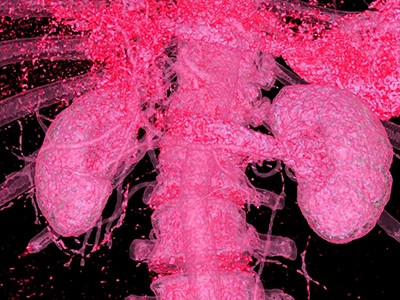
Equitable access to dialysis could prevent millions of deaths from kidney disease.Credit: Costfoto/NurPhoto/Getty
When the World Health Assembly convenes for its 78th meeting on 19 May, it will be one of the most difficult gatherings yet for the ministers of health from around the world who oversee the work of the World Health Organization (WHO). The United States is withdrawing from the WHO; armed conflicts rage; and increased economic instability looms as a result of trade wars. All these factors have contributed to a WHO budget crisis. Even before the US exit, the agency was not exactly flush with cash and had a plan to diversify its sources of funding. Assembly delegates now have the urgent task of assigning shrinking funds to where they are most needed.
With so much attention focused on the here and now, delegates must not lose sight of crucial strategic issues. This meeting presents an opportunity to reduce the global burden of non-communicable diseases (NCDs), in line with United Nations Sustainable Development Goal 3.4, and it should be seized. Specifically, the assembly should support a resolution that calls for the WHO to recognize kidney disease as a major cause of death and disability globally, and to include it in the organization’s influential list of priority NCDs, alongside cancer, cardiovascular disease, diabetes and respiratory disease.
Time to sound the alarm about the hidden epidemic of kidney disease
Led by Guatemala, co-sponsored by 19 other countries and supported by the WHO Executive Board, the resolution has widespread backing from researchers and clinicians. Last year, our colleagues at Nature Reviews Nephrology commissioned a joint Consensus Statement from the International Society of Nephrology, European Renal Association and American Society of Nephrology — supported by other medical societies from Africa, Latin America and the Asia–Pacific region — which called for kidney disease to be recognized as major driver of premature deaths from NCDs (A. Francis et al. Nature Rev. Nephrol. 20, 473–485; 2024).
Kidney disease has a staggering global prevalence — the 2021 Global Burden of Disease study estimated that some 674 million people, or around 8.5% of the global population, have chronic kidney disease (see go.nature.com/42ur6qh). It is one of the fastest-growing causes of premature death globally and is projected to become the fifth leading cause of years of life lost by 2040 (K. J. Foreman et al. Lancet 392, 2052–2090; 2018).
Kidney dysfunction also increases the risk of death from cardiovascular disease, worsens the health risks of diabetes and hypertension and can promote the development of other NCDs, including cancer and dementia. People with kidney disease often experience poor quality of life and mental ill-health. A rampant epidemic of chronic kidney disease of uncertain cause is increasingly fuelling mortality and disability in many communities in Mesoamerica, India and Sri Lanka.
Furthermore, statistics on the prevalence of kidney disease are likely to be underestimates, because many people are unaware that they have the condition, particularly in low- and middle-income countries, and these numbers do not include potentially millions of cases of acute kidney injury. Low awareness leads to delayed diagnoses, poor health outcomes and increased mortality.
The WHO aims for financial stability despite US exit
High-income countries are affected, too. There, after diagnosis, people with kidney failure have around one-third the chance of living for another five years, compared with people without kidney failure. That is lower than comparable estimates for many common types of cancer. Millions of deaths could be prevented if people in all parts of the world had more access to kidney dialysis or transplants.
The WHO resolution needs to succeed. If kidney disease were included on the priority list, the move would signal to national health systems and research funders that they, too, must prioritize it. That would unlock more attention and, ultimately, avoid many, many preventable deaths.
So far, few high-income countries are openly supporting the resolution. Some are citing the WHO’s financial crisis as a reason not to back it: it is estimated that around US$16 million is needed to begin putting the resolution into action over a 7-year period. Yet, high-income member states must surely realize that this modest amount will then unlock more funding for diagnosis, treatment and research should kidney disease be included on the WHO’s priority list for NCDs. That’s a small price for the benefits of improved detection and management of kidney disease. In the United Kingdom alone, the disease’s economic burden is estimated at £7 billion (US$9.3 billion) per year.
The WHO already supports countries with their efforts to diagnose and treat diabetes, heart disease and hypertension. But kidney disease similarly needs to be a priority, so that affordable therapies that can mitigate and delay disease progression can be deployed. To maximize their impact and reduce costs, these efforts need to be integrated into existing public-health strategies for NCDs.
In their consensus statement, the world’s nephrology societies said that failure to recognize kidney disease as a key NCD “misses the opportunity to address a major contributor to premature and preventable mortality”, adding that “coordinated global efforts to minimize the burden of kidney disease” will “save lives”.
These are undoubtedly challenging times for anyone working in global public health, but no strategy aiming to address the global NCD burden can afford to ignore the escalating morbidity and mortality driven by kidney disease. Adopting the WHO resolution will be an essential first step in that direction.




